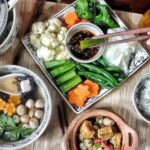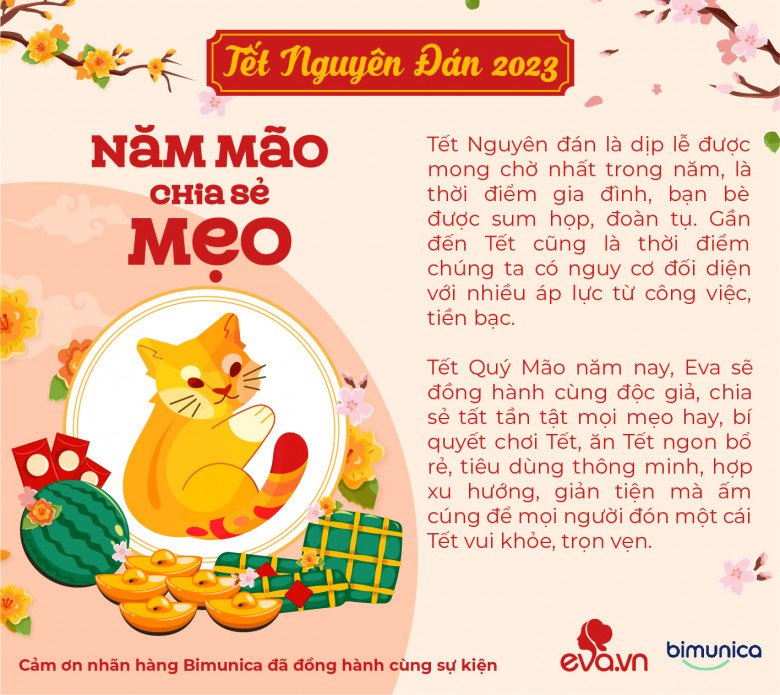
The Significance of the Five-Fruit Tray
There are numerous interpretations of the meaning behind the five-fruit tray during Tet.
Buddhist Beliefs
Many cultural researchers believe that the tradition of offering the five-fruit tray originates from Buddhism. According to Buddhist teachings, the five-fruit tray symbolizes the five virtues, which are:
– Huệ căn (Wisdom)
– Niệm căn (Mindfulness)
– Định căn (Concentration)
– Tấn căn (Diligence)
– Tín căn (Faith)
In simpler terms, these five virtues can be understood as wisdom, memory, mental stability, perseverance, and faith.
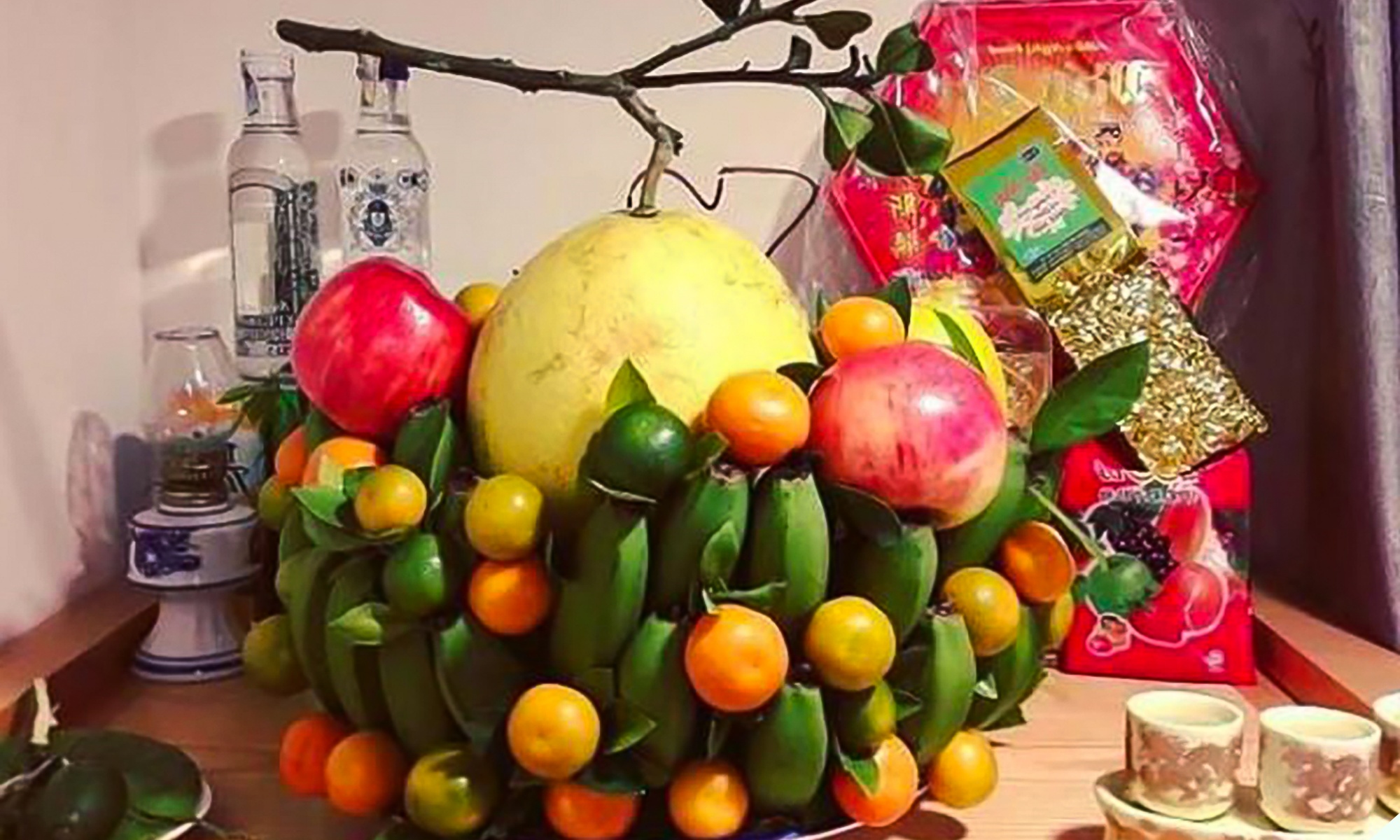
Eastern Philosophy
According to Eastern philosophy, the five-fruit tray represents the five elements: Metal, Wood, Water, Fire, and Earth. Each fruit corresponds to one of these elements, with colors that match the five components of the universe.
While the specific fruits may vary depending on the region and locality, it is essential to ensure that the colors represent the five elements.
Moreover, the five-fruit tray is also an offering of gratitude to the deities and ancestors for a year of favorable weather and peaceful life. It symbolizes the hard work of the descendants, who wish to show their respect to their elders, embodying the saying, “When you eat a fruit, think of the person who planted the tree.”
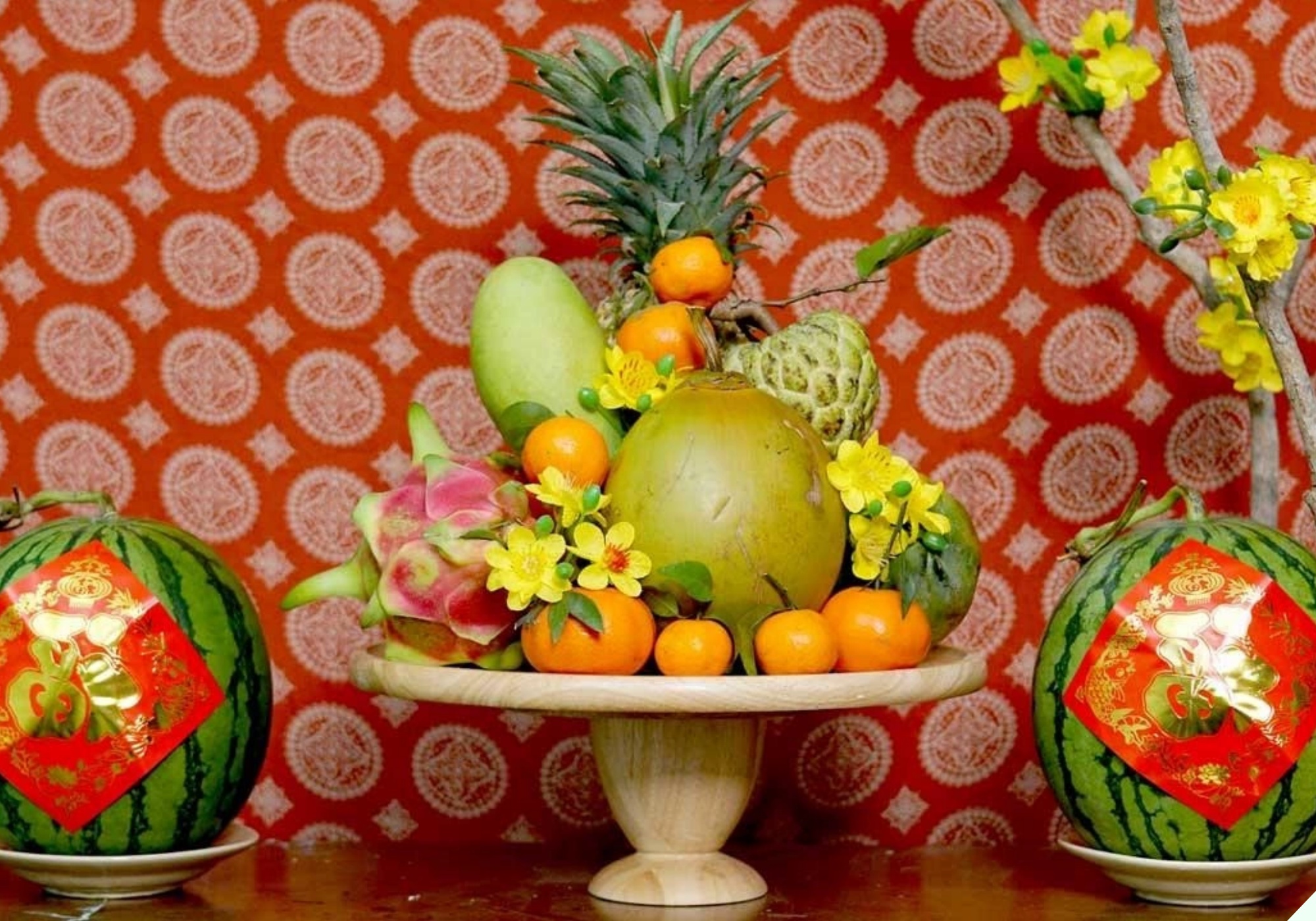
Some also interpret the five fruits as representing the five blessings: Wealth, Honor, Happiness, Longevity, and Good Health.
Symbolism of Each Fruit
In addition to the general meanings mentioned above, each fruit on the five-fruit tray holds a specific significance. They are as follows:
– Peach: Symbolizes prosperity and success.
– Persimmon: Represents longevity and good health.
– Dragon Fruit: Conveys the wish for advancement in career and studies, just as a dragon soars high.
– Pomegranate: Signifies a large and united family.
– Custard Apple: Embodies good luck and the fulfillment of wishes.
– Orange: Expresses the desire for auspiciousness and abundance.
– Pear: Represents the hope for smooth sailing in all endeavors.
– Buddha’s Hand Citrus: Also known as the “hand of Buddha,” this fruit signifies protection and the warding off of bad luck.
– Pomelo: Drives away the misfortunes of the old year and brings good luck for the new year.
– Banana: Symbolizes unity and a large family.
– Coconut: Represents the wish for a life of contentment, without scarcity.
– Watermelon: Conveys the hope for good luck.
– Fig: Represents the wish for abundance, wealth, and honor.
– Mango: Signifies the hope for a new year filled with blessings.
The five-fruit tray during Tet varies across different regions in Vietnam. Let’s explore the unique ways of arranging the five-fruit tray in the North, Central, and South of the country.
Arranging the Five-Fruit Tray for Tet
Five-Fruit Tray in Northern Vietnam
In Northern Vietnam, the five-fruit tray typically includes distinctive fruits such as bananas, pomelos, and Buddha’s hand citrus. Other fruits like oranges, mangoes, tangerines, pears, apples, persimmons, and peaches are also commonly used.
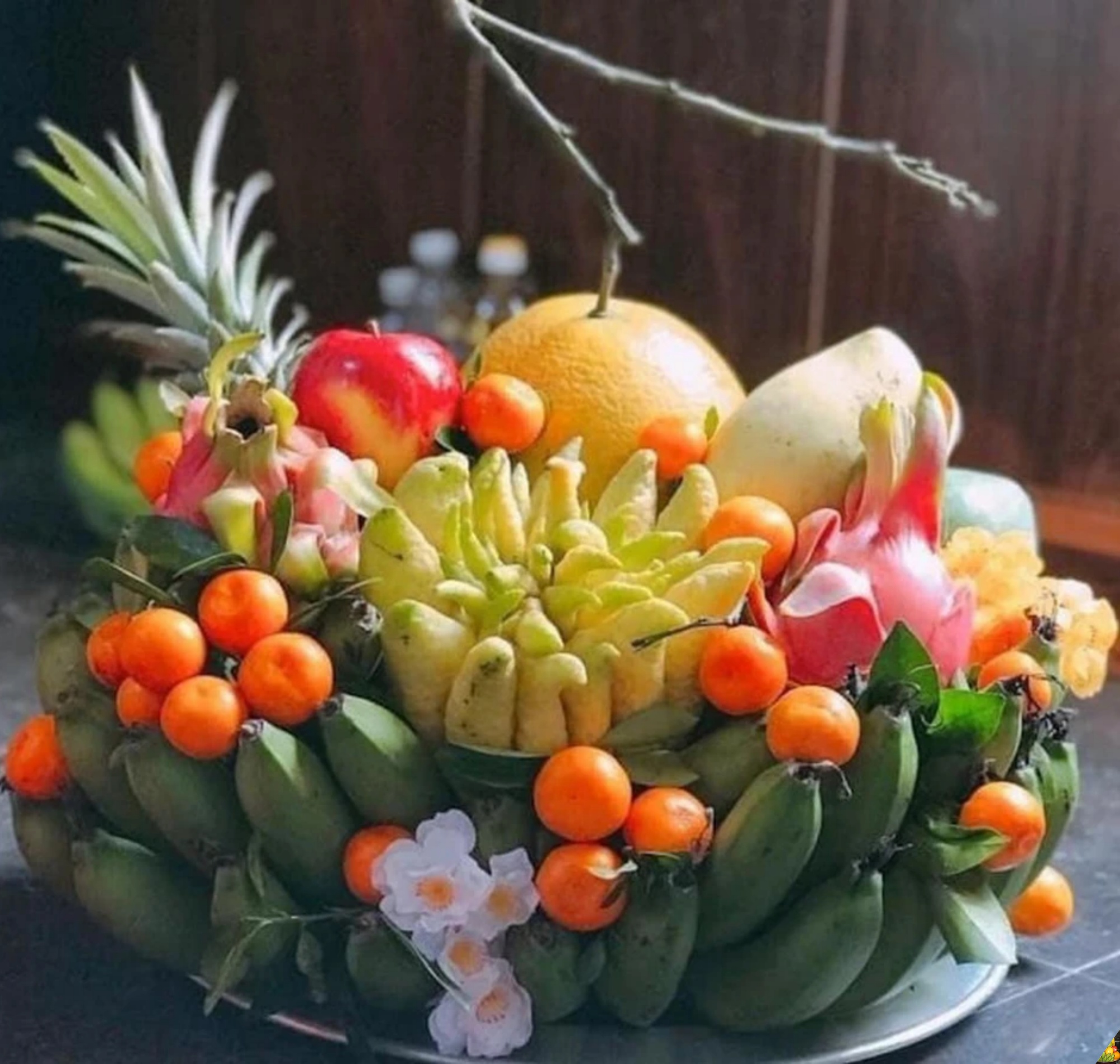
When selecting fruits, it is essential to choose those with attractive shapes and avoid any that are bruised or scratched. It is also important to choose fruits that are abundantly available, such as bananas and custard apples, to symbolize prosperity and abundance.
The arrangement typically follows this order: bananas at the bottom, pomelos in the center, and oranges, tangerines, persimmons, and peaches arranged around them.
Five-Fruit Tray in Central Vietnam
In Central Vietnam, the five-fruit tray is kept relatively simple and less elaborate. In addition to the familiar fruits, the tray includes watermelons and figs, along with a few chrysanthemums to add a touch of color.

The arrangement is quite straightforward, following the principle of placing larger fruits at the bottom and smaller ones on top. Bananas are placed at the base, with watermelons in the center, surrounded by mangoes, oranges, pineapples, and custard apples. A few chrysanthemums are added to enhance the visual appeal of the tray.
Five-Fruit Tray in Southern Vietnam
Compared to the North and Central regions, the five-fruit tray in Southern Vietnam has a distinct style. On the offering tray, people arrange five types of fruits that are homophones for auspicious words: Cầu (jackfruit), Dừa (coconut), Đủ (papaya), Xài (mango), and Sung (fig), specifically:
– Jackfruit (Cầu): Symbolizes wishes for good health.
– Coconut (Dừa): Represents a peaceful and harmonious life.
– Papaya (Đủ): Conveys the wish for abundance and satisfaction.
– Mango (Xài): Represents the desire to spend and enjoy life.
– Fig (Sung): Signifies the hope for a prosperous and wealthy life.
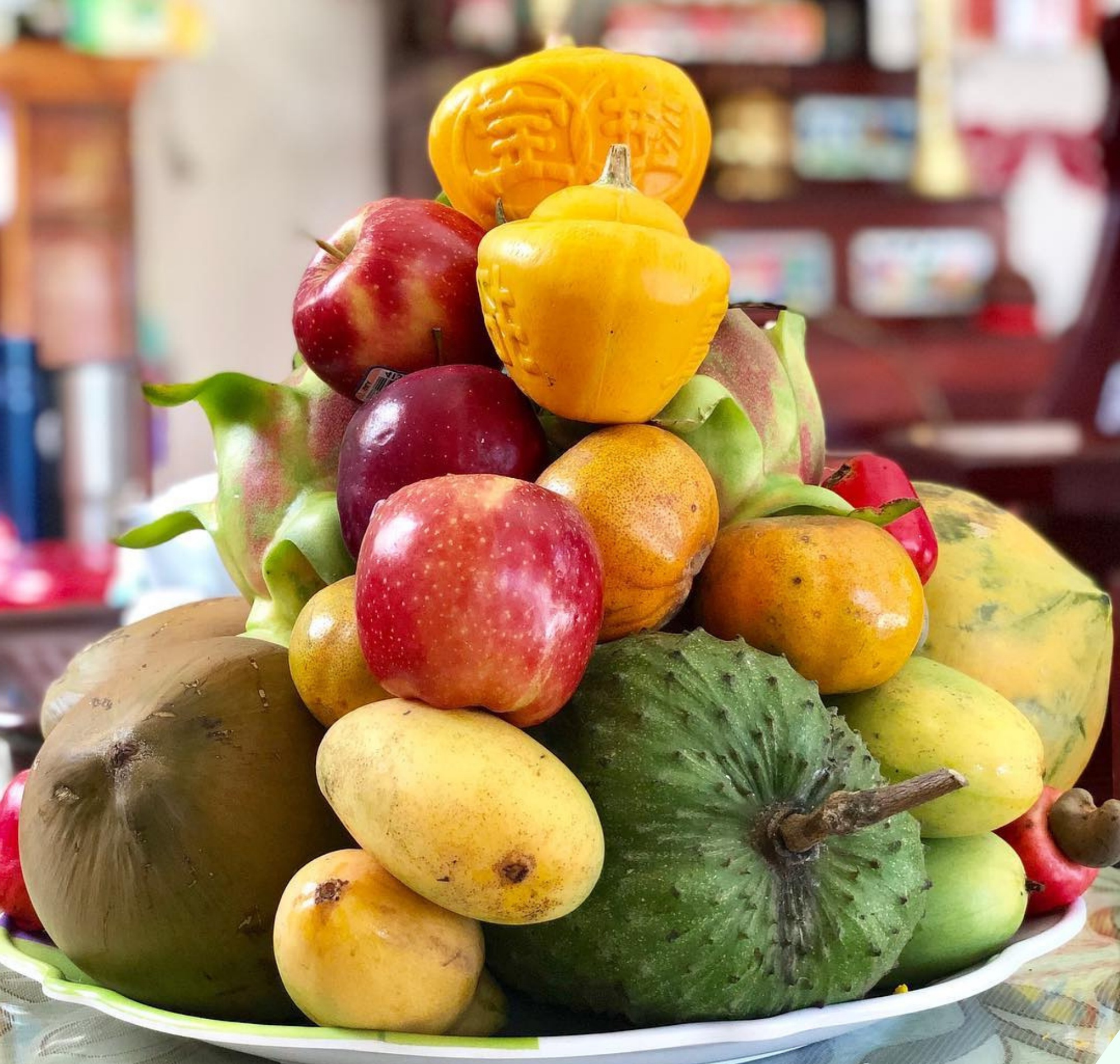
Unlike the North and Central regions, where the fruits are arranged with larger fruits at the bottom and smaller ones on top, people in Southern Vietnam arrange the fruits in a pyramid shape, with heavier and larger fruits at the front and lighter ones on top.
In addition to these five fruits, Southern Vietnamese families often place two green watermelons on the ancestral altar to attract good luck or a pineapple to express their wish for a large and united family.
Important Notes When Arranging the Five-Fruit Tray
When arranging the five-fruit tray for Tet, keep in mind the following tips to avoid any major taboos:
Clean the Fruits Thoroughly
The biggest taboo when arranging the five-fruit tray for offerings is to use rotten or moldy fruits. Therefore, make sure to wash the fruits thoroughly and dry them completely to prevent any residual water from causing mold or rot during the worship period.
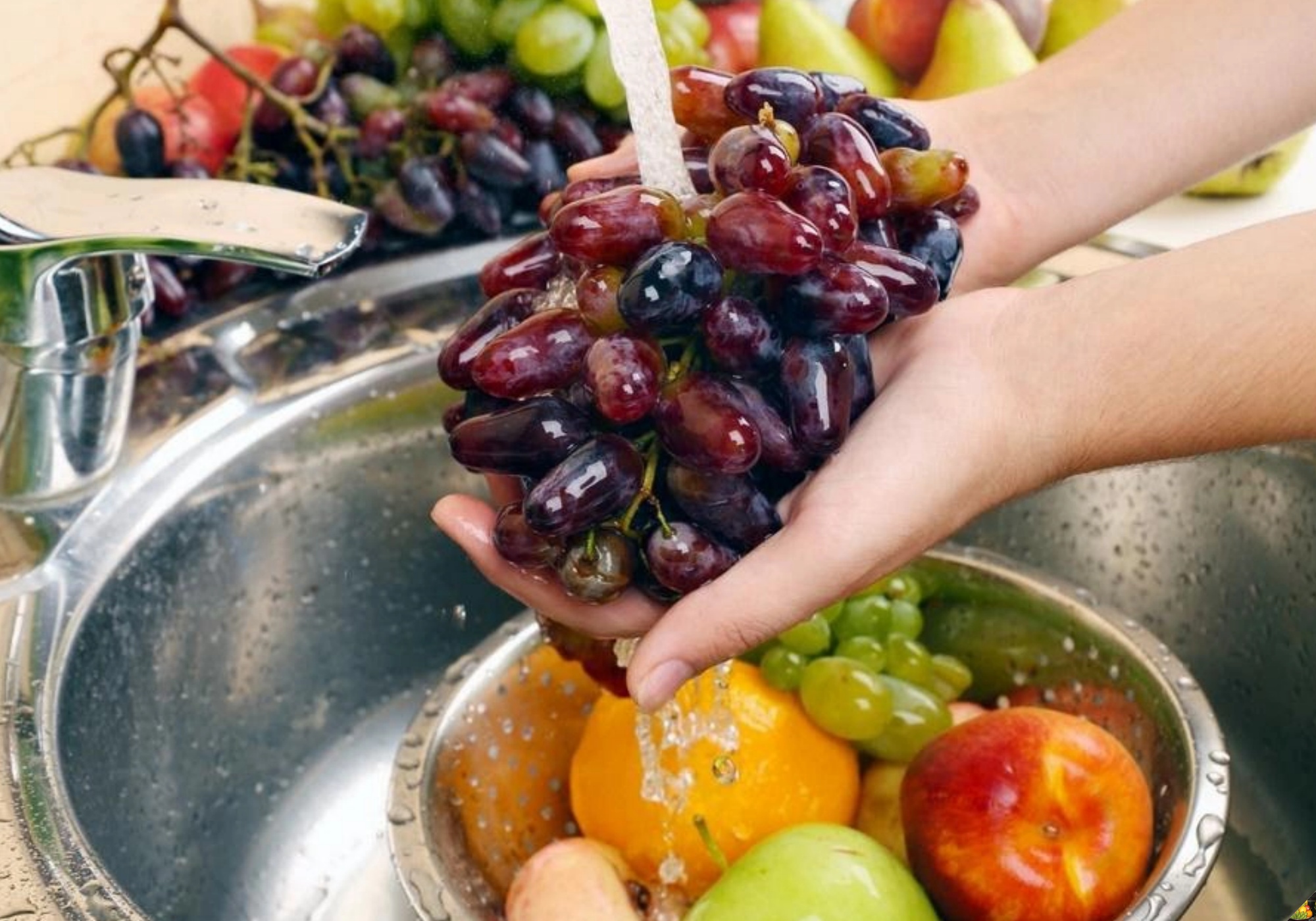
Avoid Overripe Fruits
Typically, the five-fruit tray is displayed from the 28th day of the last lunar month until the end of Tet, and some families even keep it until the 15th day of the first lunar month. Therefore, it is best to choose fruits that are ripe but not overly so. Overripe fruits tend to wither, soften, and spoil quickly.
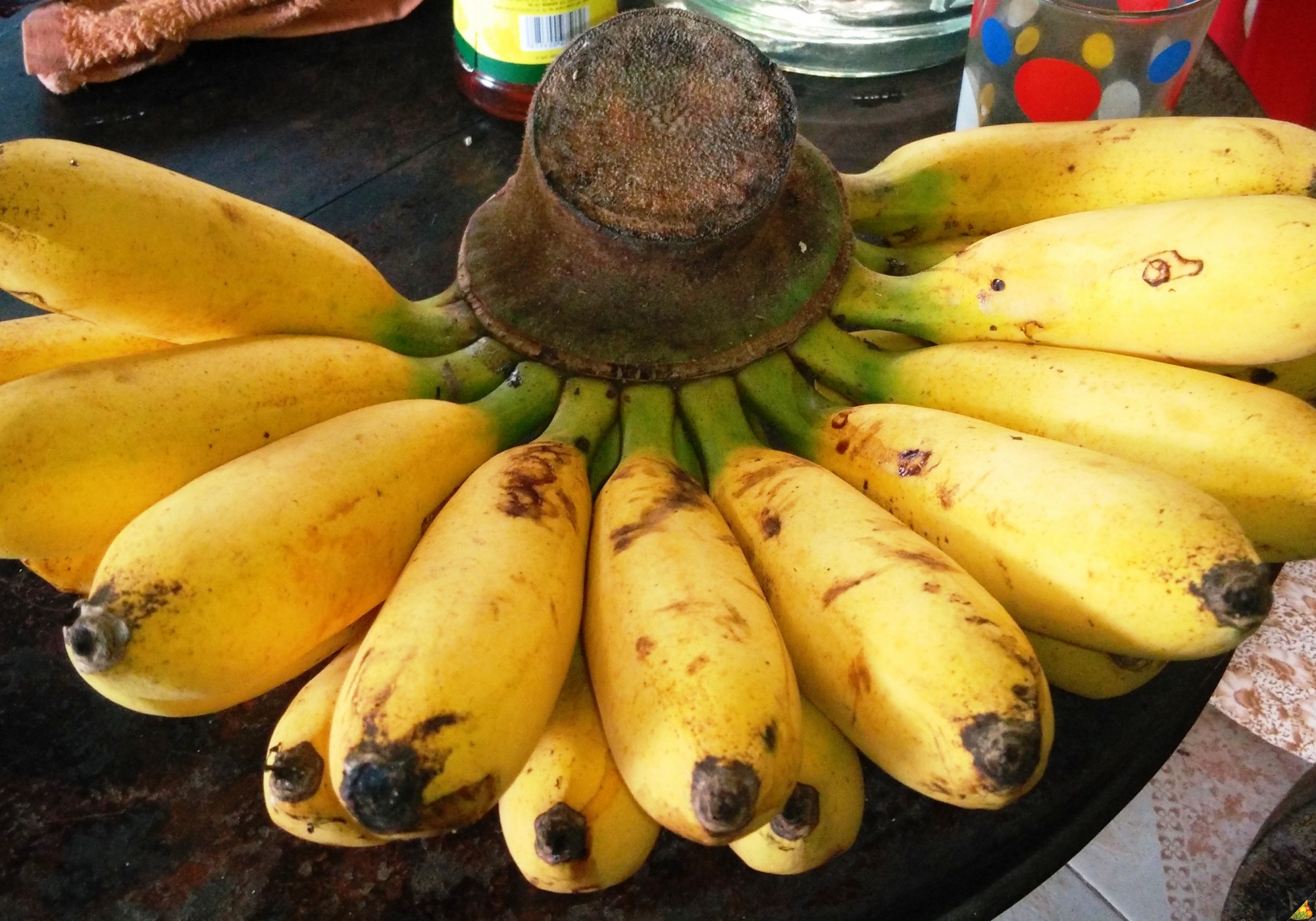
Choose Fruits of Five Different Colors
One common mistake people make when buying fruits for the five-fruit tray is not paying attention to the colors. As mentioned earlier, the five-fruit tray represents the five elements: Metal, Wood, Water, Fire, and Earth. Therefore, the fruits should also correspond to these elements through their colors. Specifically:
– Metal (Gold): Choose fruits that are white, such as pears.
– Water: Corresponds to dark green colors. You can select dark-colored fruits like black grapes or breast milk fruit.
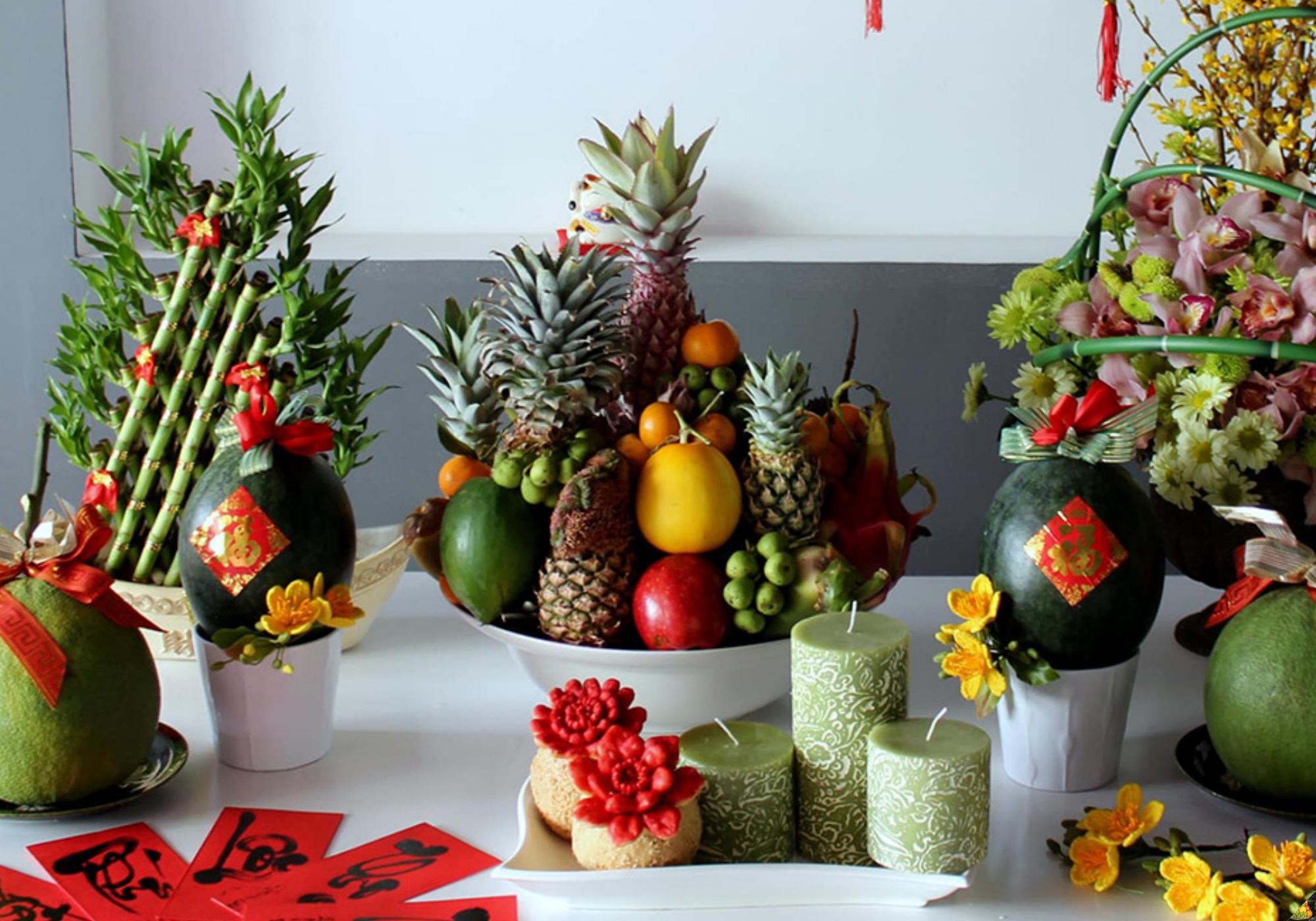
– Fire: Corresponds to red colors. Dragon fruit, apples, and peaches are good choices.
– Wood: Represented by green colors. Durians, green bananas, green mangoes, custard apples, and figs are suitable options.
– Earth: Associated with the color yellow. Oranges, tangerines, and Buddha’s hand citrus are perfect for this element.
Avoid Fruits with Thorns or Strong Scents
It is considered taboo to place fruits with sharp thorns or strong odors on the ancestral altar. Examples include durians, mangosteens, jackfruits, chilies, and some fruits that grow close to the ground.
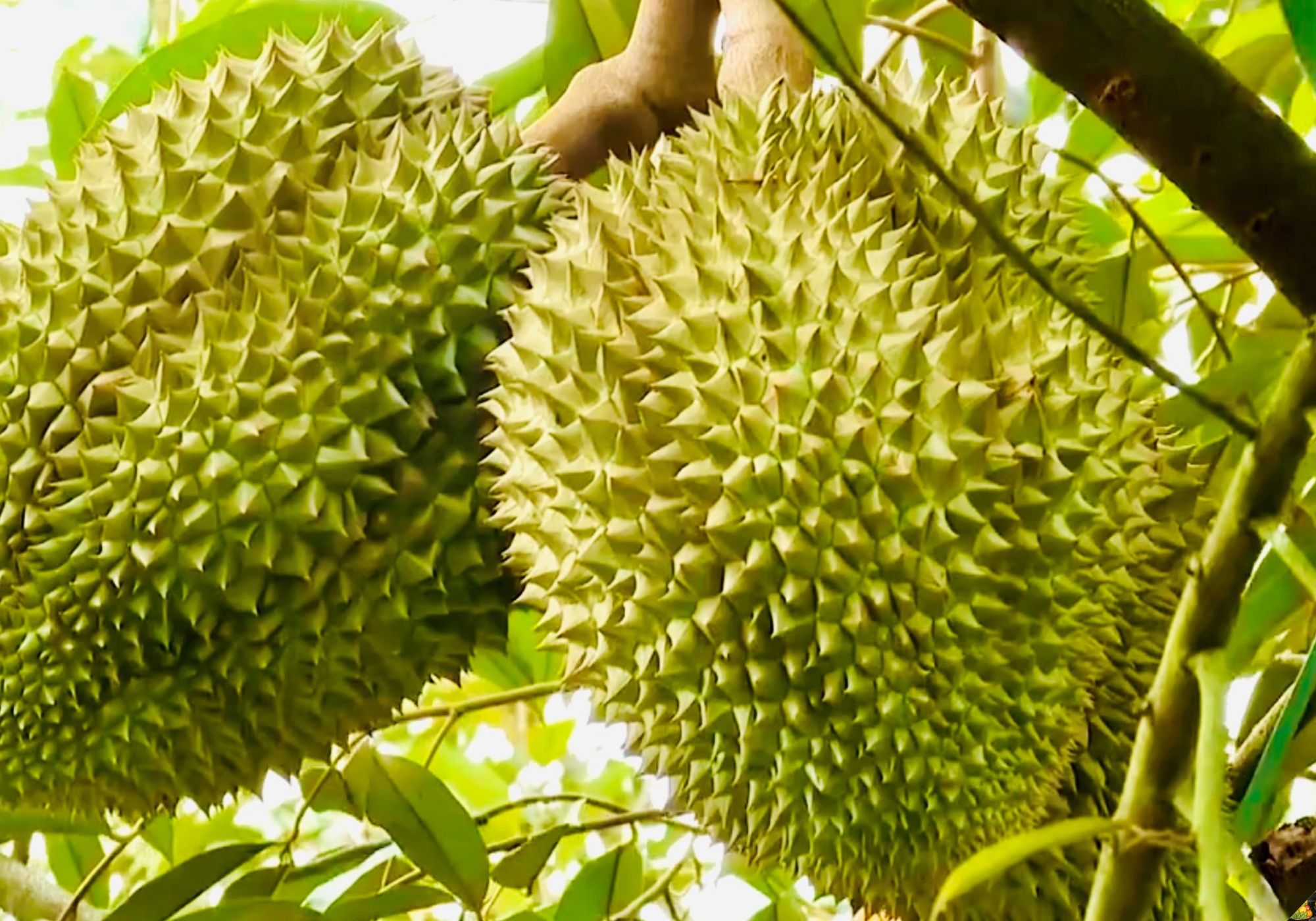
According to traditional beliefs, these types of fruits can bring pollution and negatively impact the family’s peace and harmony.
Avoid Artificial Fruits
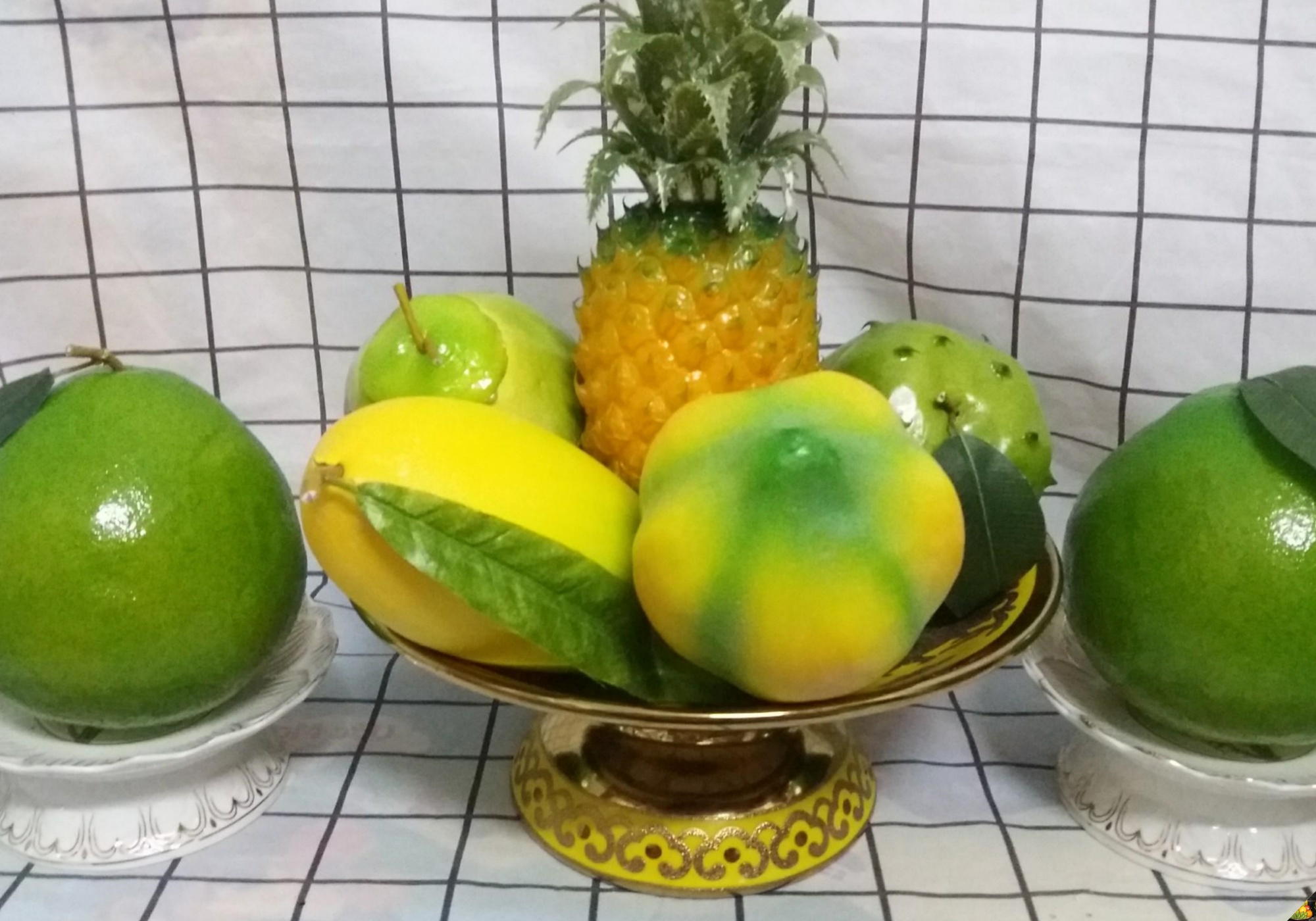
One of the most important taboos to avoid when arranging the five-fruit tray for Tet is using artificial fruits. While these may be suitable for decorative purposes, they are not appropriate for the ancestral altar, as they lack the vitality and warmth of fresh fruits. When offering fruits to your ancestors, it is essential to use fresh fruits to demonstrate your sincerity and respect.
Beautiful and Meaningful Five-Fruit Tray Arrangements for Tet
Here are some beautiful and meaningful five-fruit tray arrangements for Tet that are easy to recreate.
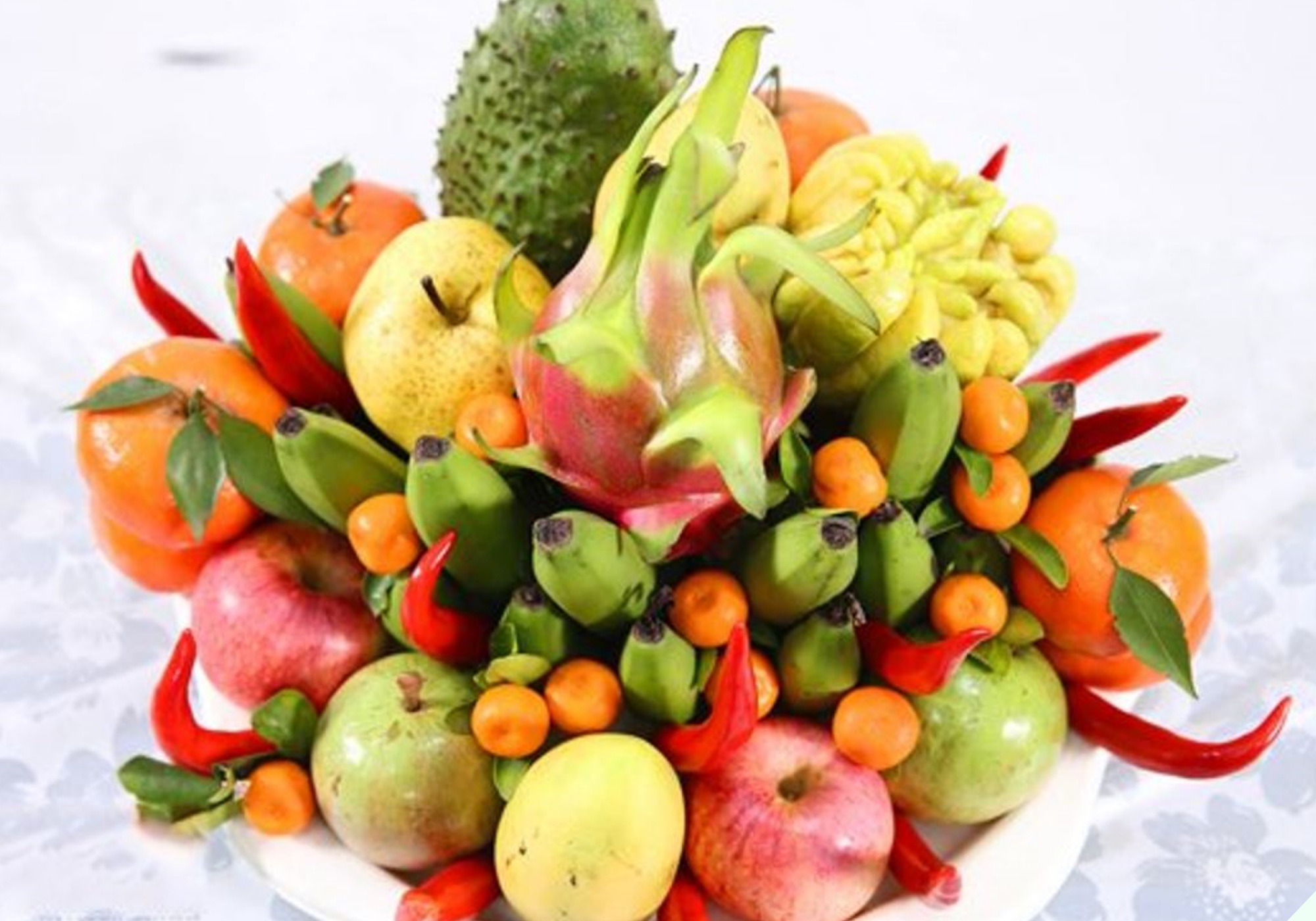
A five-fruit tray from Northern Vietnam, featuring a variety of colorful fruits.
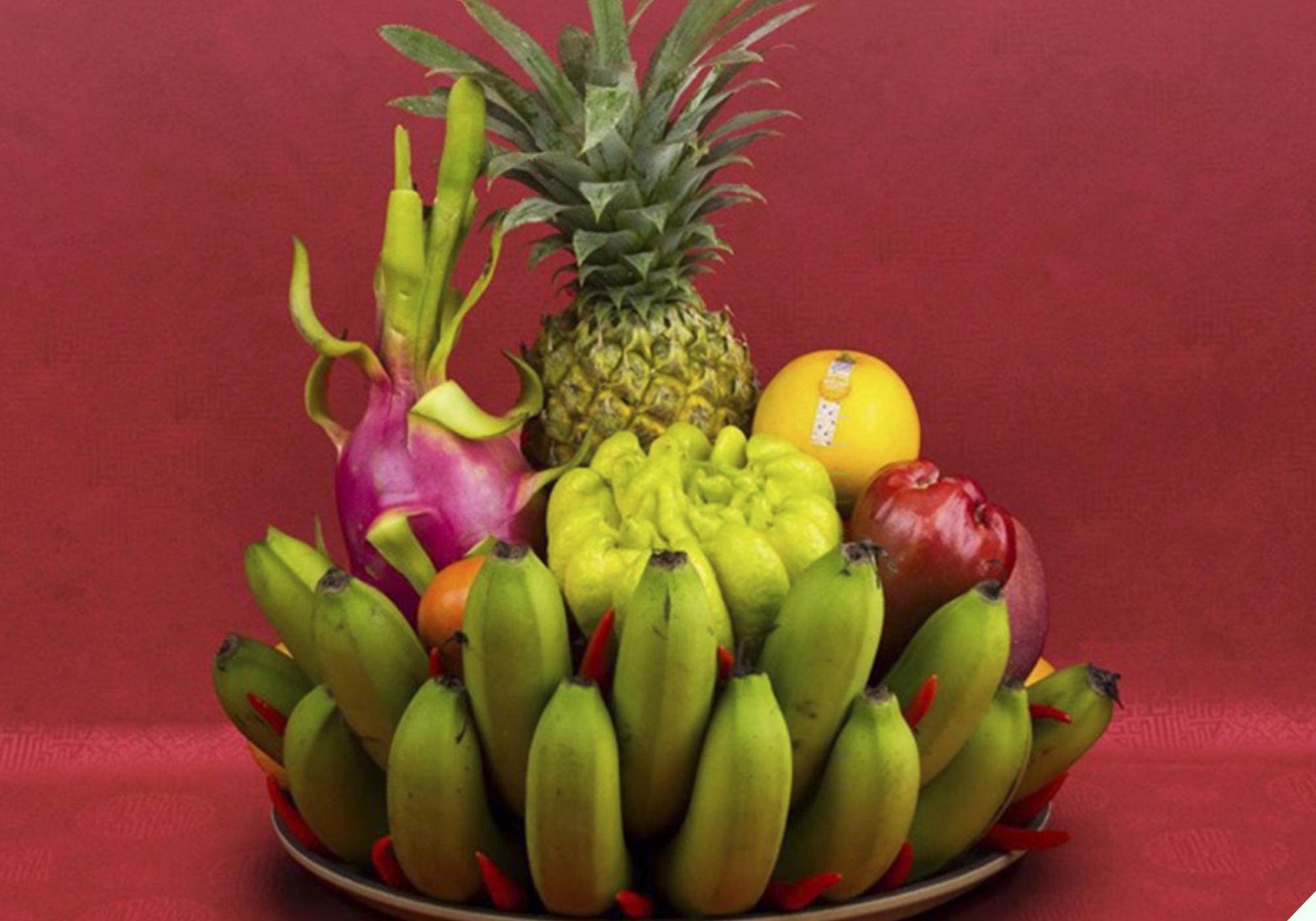
Although this arrangement features fewer types of fruits, it still conveys a sense of fullness and significance.
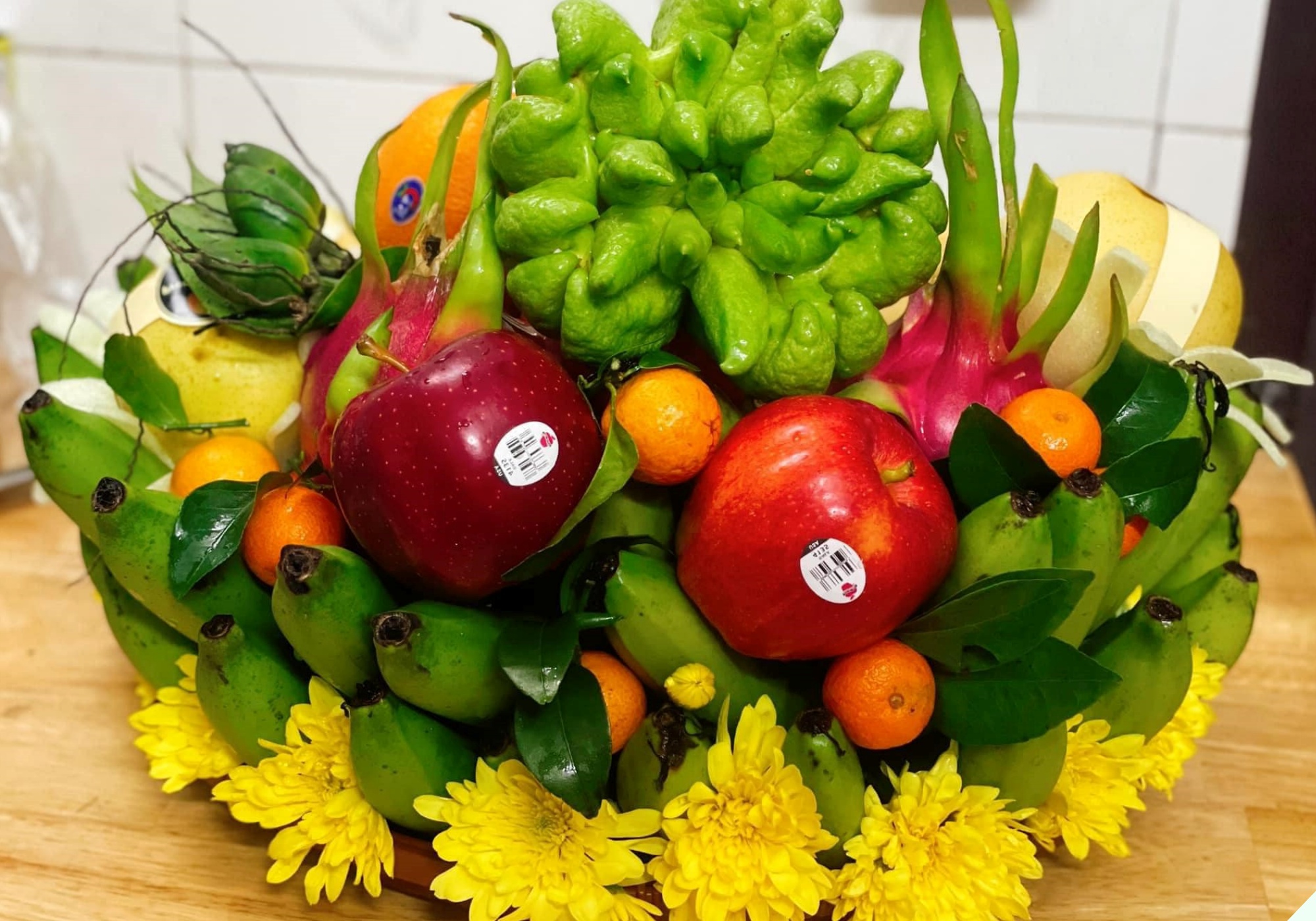
People in Central Vietnam often add chrysanthemums to their five-fruit trays for a touch of elegance.
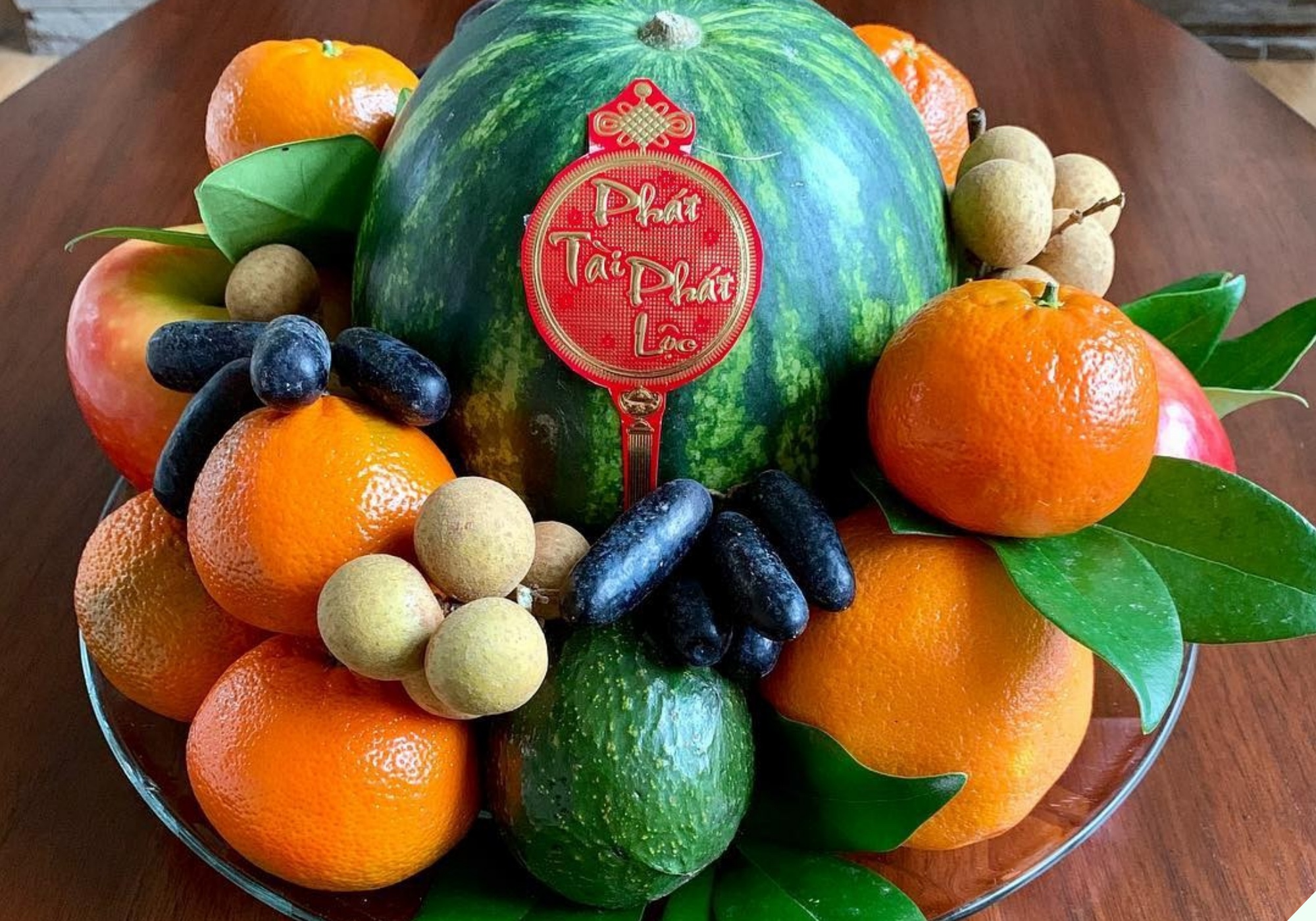
Watermelon is a must-have fruit on the ancestral altar during Tet in Southern Vietnam.
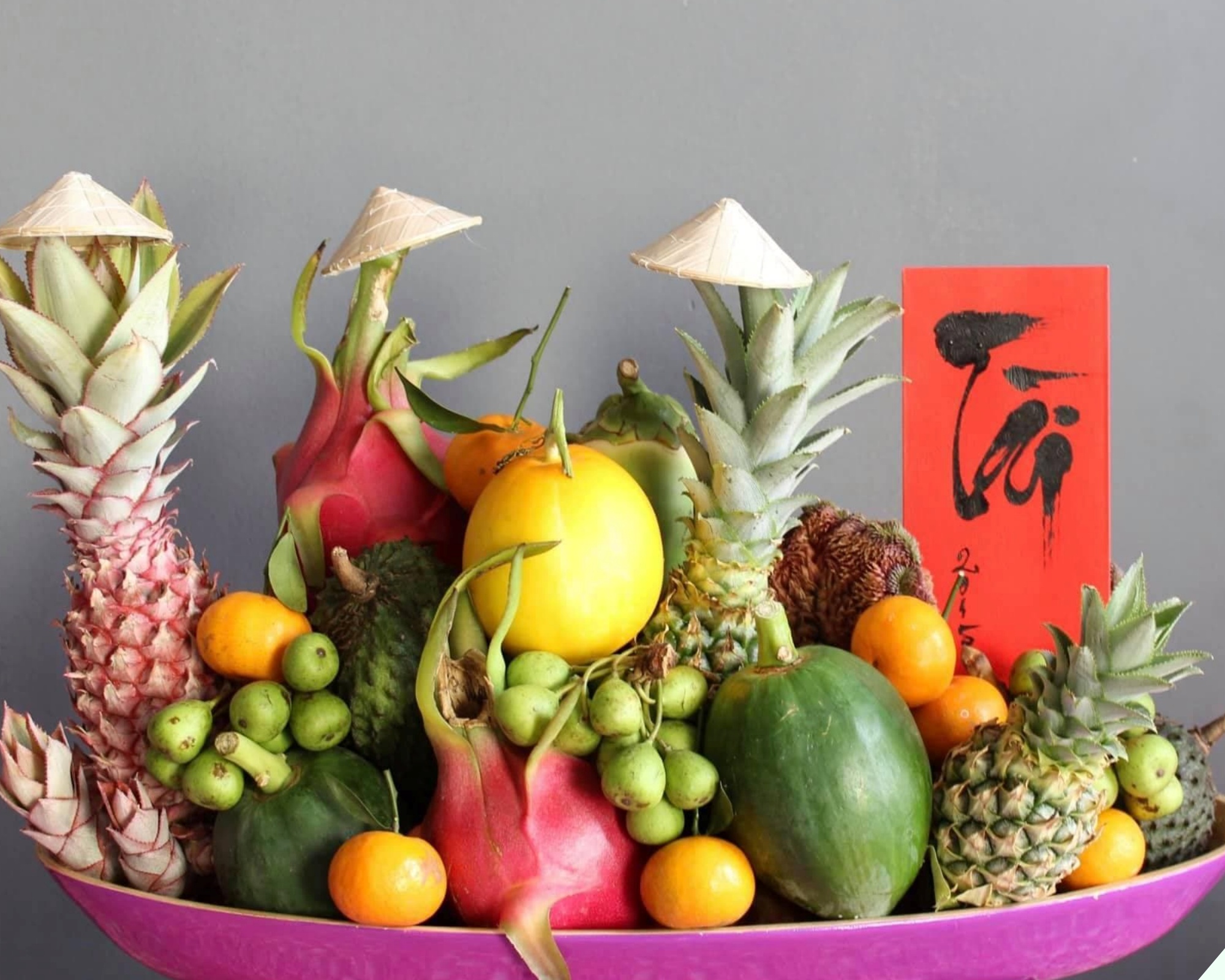
A creative arrangement that conveys a meaningful message.
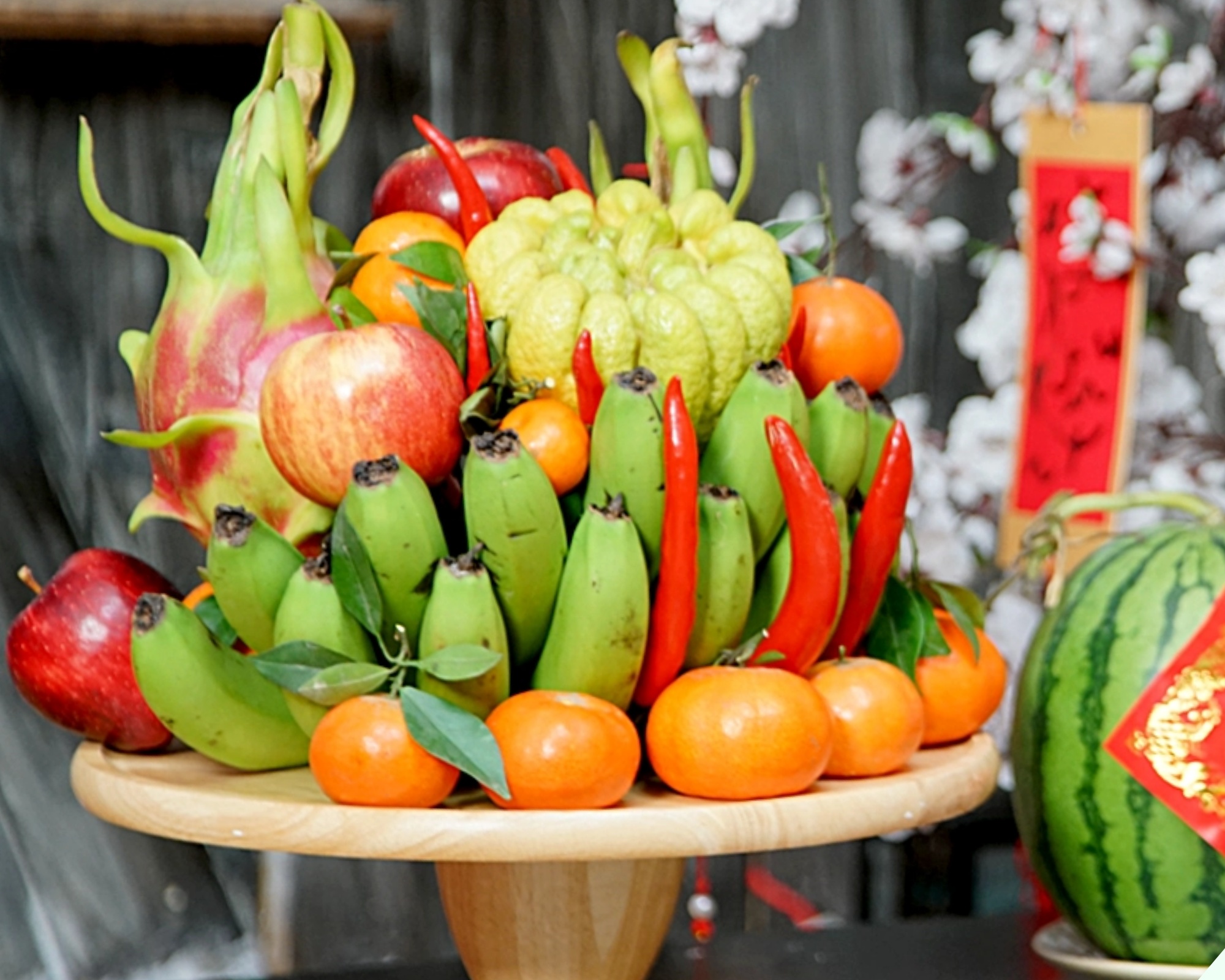
Some places include chilies in their five-fruit trays.
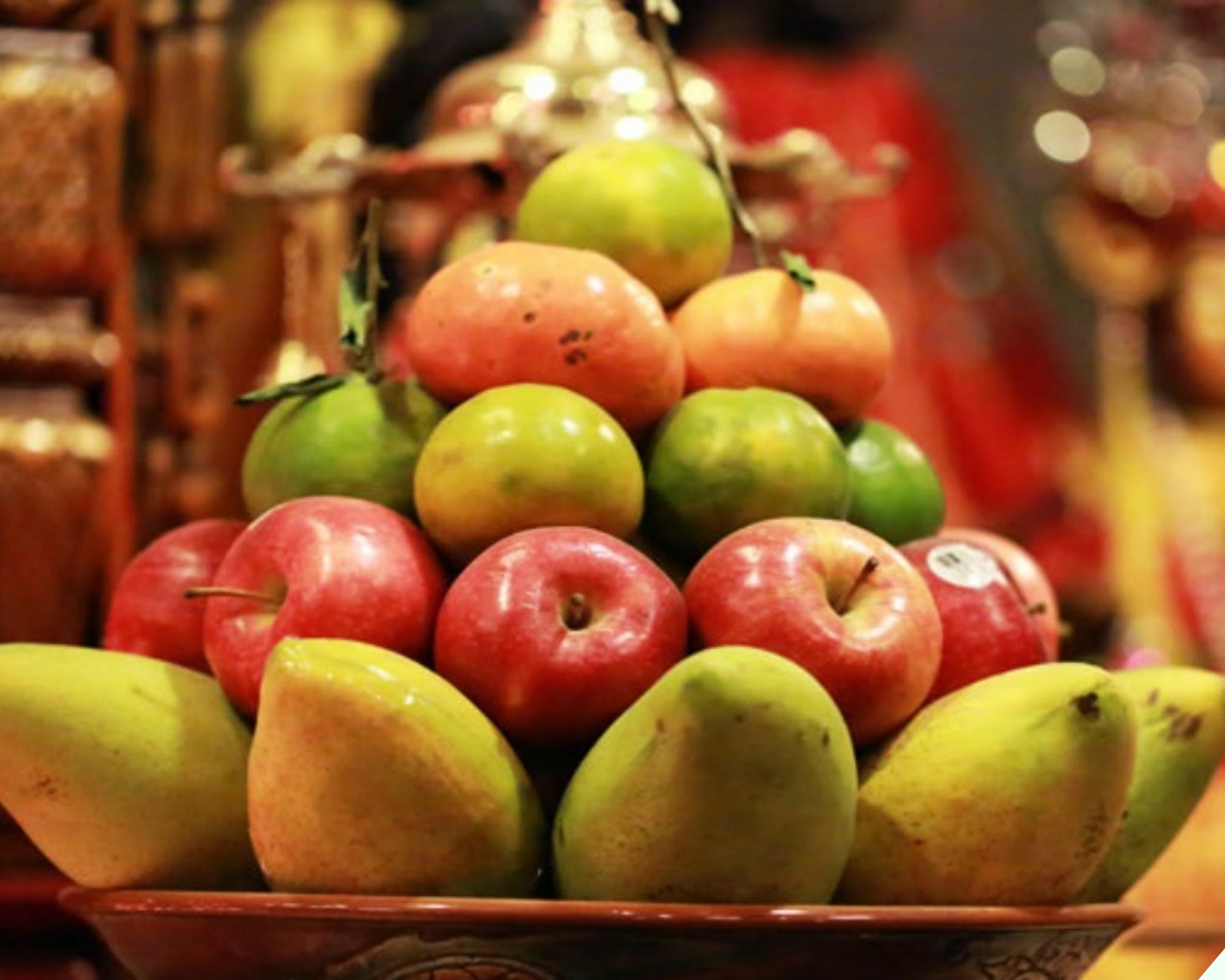
What Day is It When You Eat Vegetarian for 10 Days in a Month and What Does It Mean?
Adopting a vegetarian diet is becoming increasingly popular for a myriad of reasons, be it for religious purposes or for health benefits and detoxification. For Buddhists, this entails observing a vegetarian diet for ten days each month, abstaining from meat and fish. However, many are unaware of when these ten days occur and their significance. This article aims to provide enlightening answers to these queries.


























